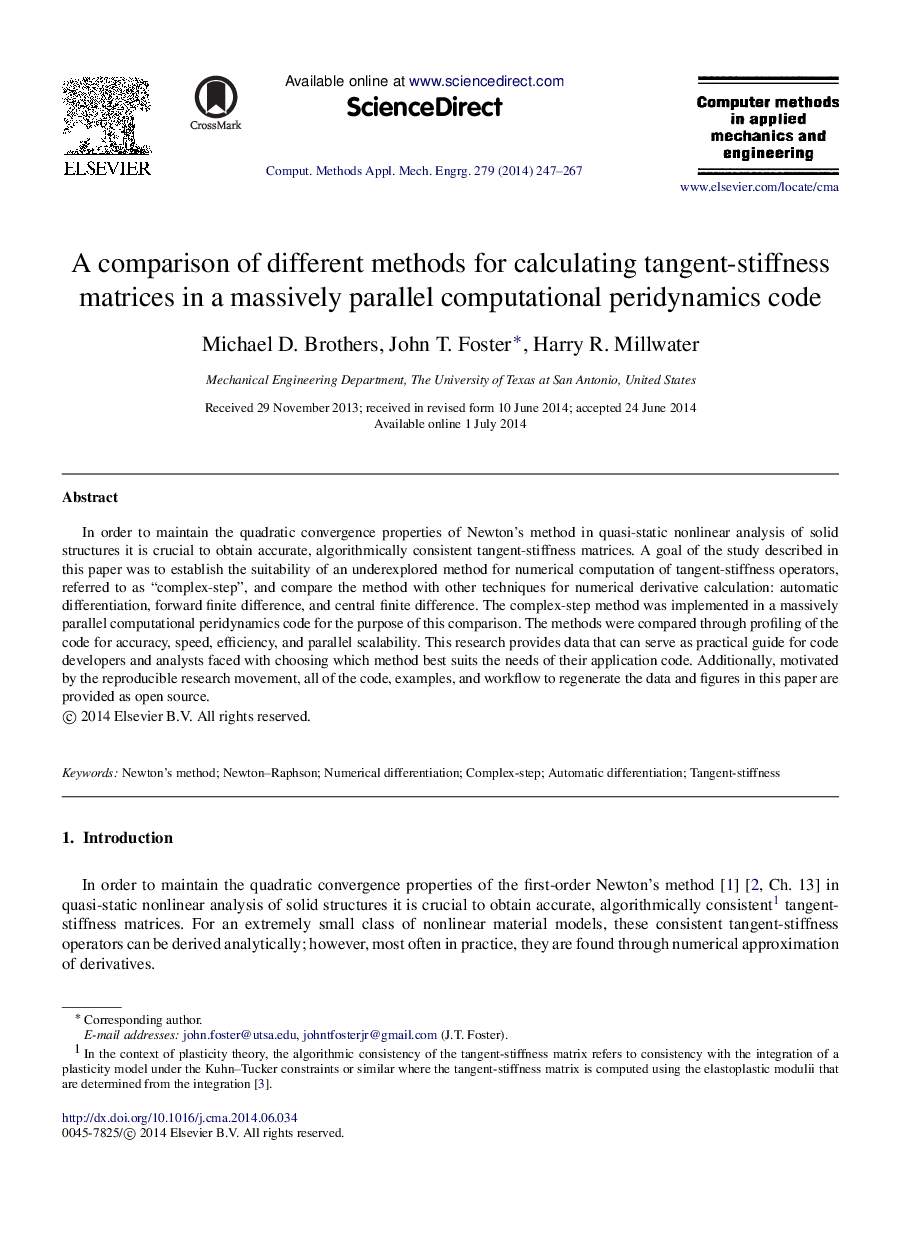| Article ID | Journal | Published Year | Pages | File Type |
|---|---|---|---|---|
| 6917439 | Computer Methods in Applied Mechanics and Engineering | 2014 | 21 Pages |
Abstract
In order to maintain the quadratic convergence properties of Newton's method in quasi-static nonlinear analysis of solid structures it is crucial to obtain accurate, algorithmically consistent tangent-stiffness matrices. A goal of the study described in this paper was to establish the suitability of an underexplored method for numerical computation of tangent-stiffness operators, referred to as “complex-step”, and compare the method with other techniques for numerical derivative calculation: automatic differentiation, forward finite difference, and central finite difference. The complex-step method was implemented in a massively parallel computational peridynamics code for the purpose of this comparison. The methods were compared through profiling of the code for accuracy, speed, efficiency, and parallel scalability. This research provides data that can serve as practical guide for code developers and analysts faced with choosing which method best suits the needs of their application code. Additionally, motivated by the reproducible research movement, all of the code, examples, and workflow to regenerate the data and figures in this paper are provided as open source.
Related Topics
Physical Sciences and Engineering
Computer Science
Computer Science Applications
Authors
Michael D. Brothers, John T. Foster, Harry R. Millwater,
